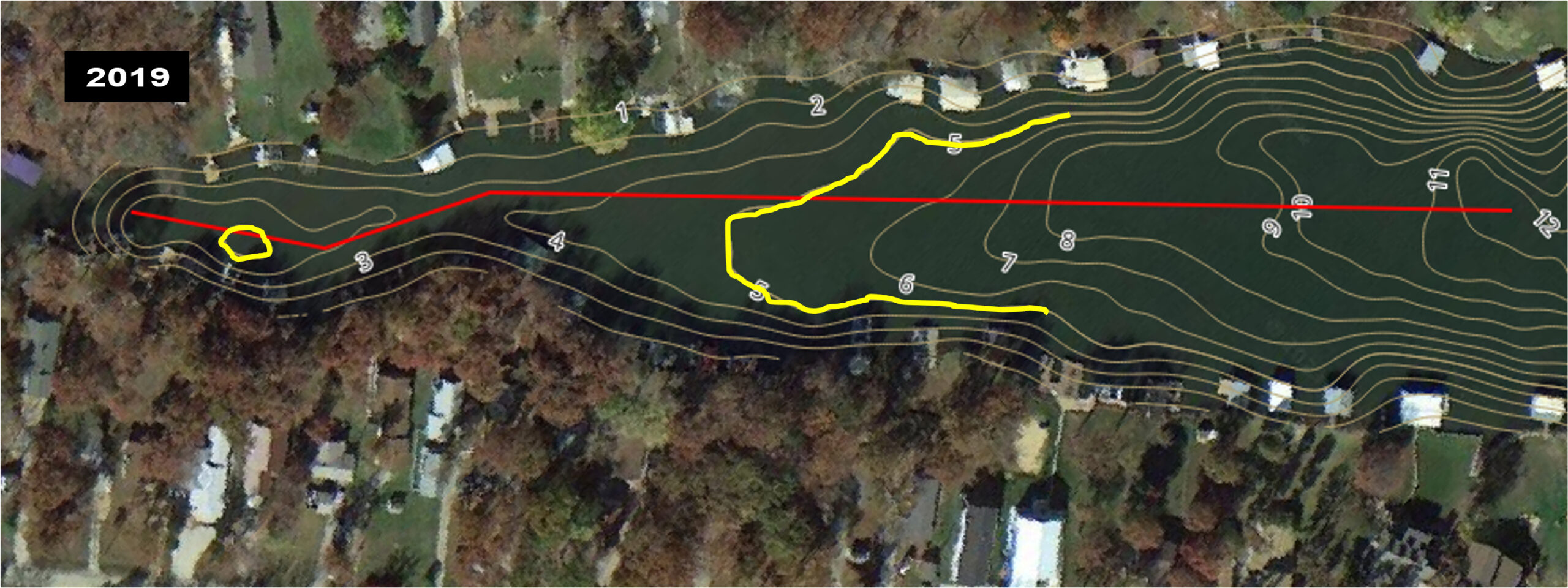
INDIAN LAKE CASE STUDY
1. Background
Indian Lake is a 320-acre lake with an average depth of 15 feet and maximum depth of 43 feet. The lake has a history of being hyper-eutrophic and experiencing summer-long toxic cyanobacteria harmful algae blooms (HABs). In April 2022 a comprehensive remediation program commenced to prevent HABs and reverse eutrophication commenced. The program focused on reversing eutrophication and preventing cyanobacteria HABs by eliminating hypoxia, improving phytoplankton dynamics to control cyanobacteria HABs and Bio-Dredging nutrient-rich organic sediment.
The remediation program is in full alignment with the recommendations of the landmark 2022 report by the U.S. Government Accountability Office (GAO-22-104449) on managing harmful algal blooms and hypoxia.
2. Hypoxia
2.1 Scientific Principles
Hypoxia occurs when dissolved oxygen levels in the water are depleted. The EPA defines hypoxia as DO levels below 2.5mg/l. Water is anaerobic if DO is below 1mg/l. The objective is to maintain aerobic conditions that support animal life which is defined as DO above 5mg/l.
2.2 Analysis of Dissolved Oxygen Data
Benchmark data was collected on the lake in July 2019 and August 2021, (the year before the remediation program began). It showed that below about 18 feet the water was hypoxic (<2.5mg/l DO). Bathymetric analysis shows that means 18% of the water volume and 37% of the sediment surface area is hypoxic.
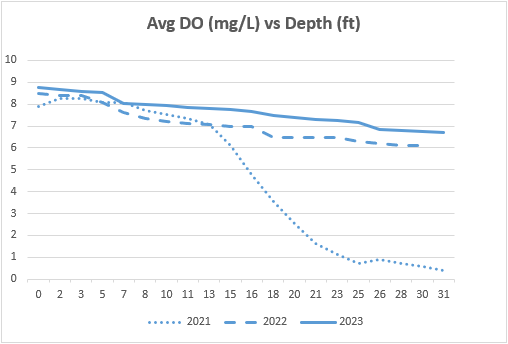
blueprint-New-Standard-chart
When DO drops below 5 ml/g eutrophication starts.
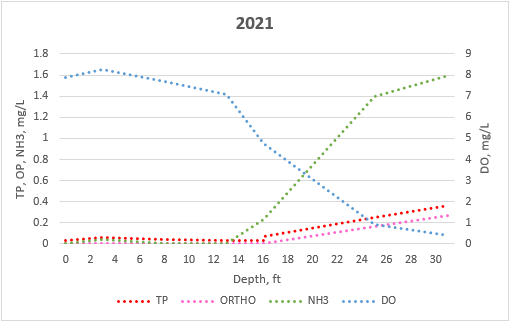
blueprint-Figure2
When DO is low, excessive nutrients increase.
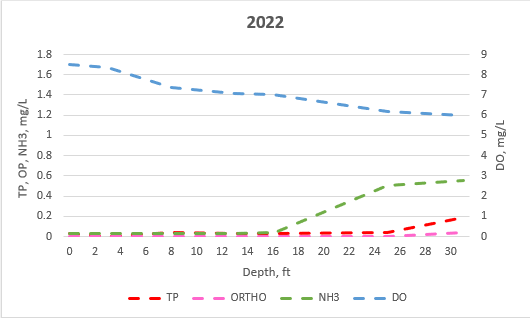
blueprint-figure3
With higher DO levels, excessive nutrients decline.
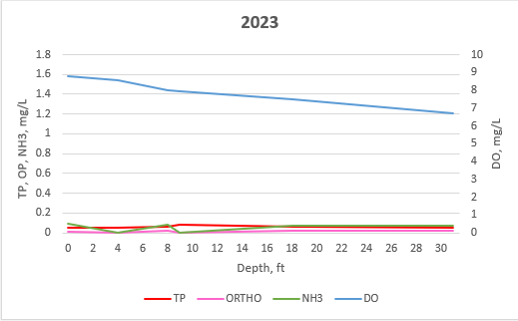
blueprint-figure4
With higher DO levels, excessive nutrients decline.
3. Phytoplankton Management to Prevent HABs
3.1 Scientific Principles
To restore balance and prevent cyanobacteria HABs the phytoplankton management program works on several levels:
1. Increase Phytoplankton Biodiversity: Competition to the cyanobacteria must be created by increasing the biodiversity of phytoplankton present. This is confirmed by an increase in the number of non-cyanobacteria HAB taxa identified.
2. Shift in Balance of Phytoplankton: These competitor algae must compete effectively against cyanobacteria. This is confirmed by a shift in the ratio of cyanobacteria HAB biovolume to “good green algae” biovolume, in favor of the algae.
3. Reduction in Total Phytoplankton Biovolume: Over time, the objective is also to reduce the overall level of phytoplankton in the lake. This is confirmed by a reduction in the total phytoplankton biovolume.
3.2 Increasing Phytoplankton Biodiversity to Create Competition to Cyanobacteria
The graph below shows the average number of cyanobacteria taxa (blue), non-cyanobacteria (or “good green algae”) taxa (lime green) and total taxa (green) identified in monthly sampling from May to September. On average, in 2021 on average 6 different taxa were identified of which 5 or 83% were cyanobacteria, and in 2023 28 different taxa were identified of which 5 or 17% were cyanobacteria.
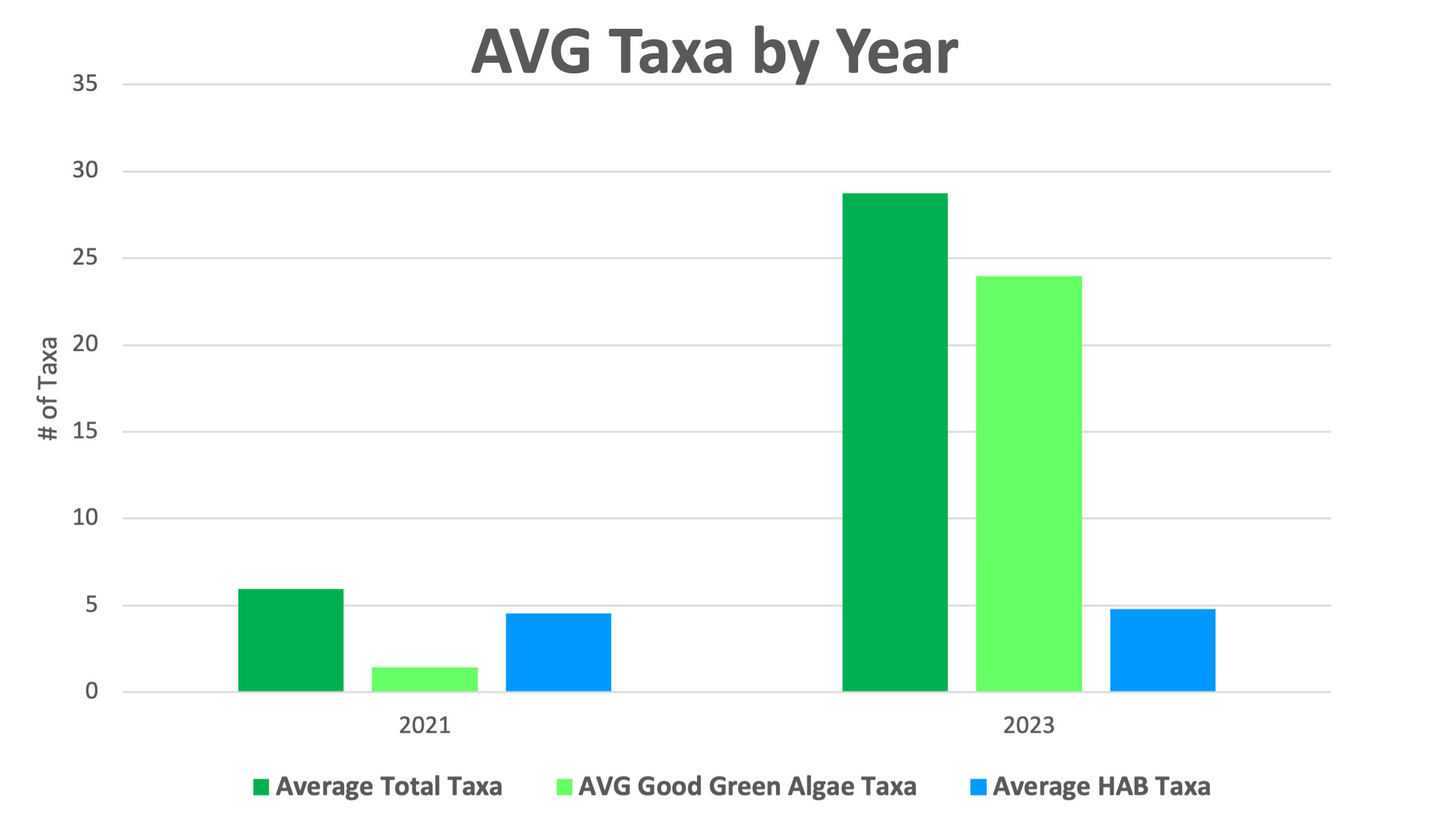
average-taxa-by-year-2w
In 2021 most Taxa is HABs but by 2023 we significantly increased the good green algae count while hold HABs steady and now is a small fraction of the total.

AVG-Biovolume-by-year-2w
In 2021, total phytoplankton biovolume was 96% were cyanobacteria and by 2023 biovolume cut to less than half and good green algae a much bigger percentage of the total.
4. Sediment Bio-Dredging
4.1 Scientific Principles
There are three key principles to understand how Bio-Dredging is achieved.
1. By creating aerobic conditions and providing enzymes to actively digest the sediment, the rate of digestion of sediment is increased so there is a net reduction in sediment.
2. By suppressing and controlling the rate of nutrient recycling by oxygenation, the amount of phytoplankton biomass produced can be limited to a level at which the food web can consume more of it before it dies off, so there is less dead biomass sinking back into the sediment.
3. By maintaining an aerobic benthic margin, benthic zooplankton can function across the whole lake bottom, thus increasing the nutrient clearance capacity of the food web.
So the principle that full oxygenation must be ensured for remediation applies again
4.2 Analysis of Bathymetric Data
Bathymetric analysis shows that compared to a reference bathymetric scan in 2019, in October 2023, 383,946 cubic yards of nutrient-rich sediment had been enzymatically digested and cleared from the lake through the process of Bio-Dredging.
| 2019 | 2023 | 2019 – 2023 Change | |
|---|---|---|---|
| Water Volume (gal) | 1,505,003,227 | 1,582,550,482 | |
| Water Volume (cu yd) | 7,451,469 | 7,835,415 | 383,946 |
| Sediment Reduction (cuyd) | 383,946 |
Bio-Dredging diminishes legacy sediment P, N, and C stockpiles that drive eutrophication because fully oxygenated water acts to suppress nutrient recycling to a rate that the food web can cope with.
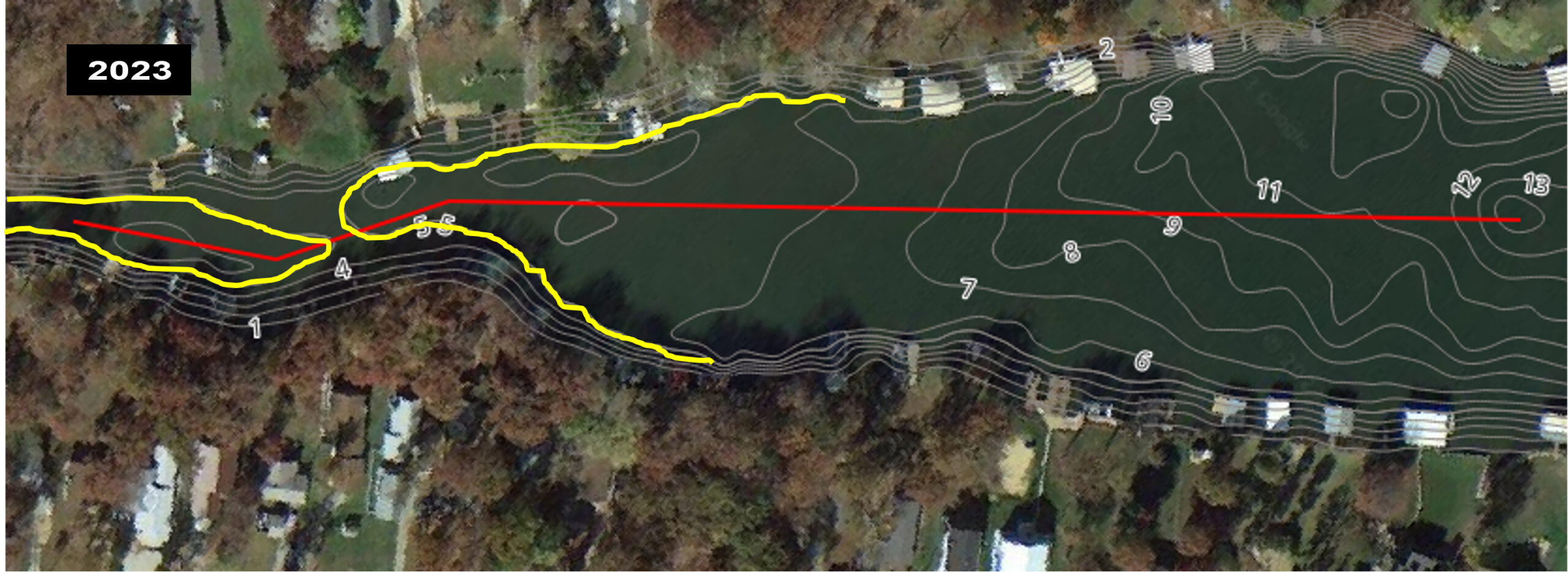
5. Summary
SIS.BIO’s ONE Biotechnology has been delivering to the recommendations of the 2022 GAO Report for many years. It is based on directly addressing root causes rather than second order symptoms.
That means that the parameters we monitor differ from convention. Rather than monitoring general water quality parameters, we specifically focus on measurement of:
- Oxygenation
- Phycological profiles (phytoplankton taxa and biovolume)
- Bathymetric data to monitor sediment reduction by Bio-Dredging.
This protocol not only speaks directly and specifically to the root causes of eutrophication and HABs, it measures parameters that we can influence and control and provides relevant input for adaptive management, program optimization, and performance measurement towards the achievement of specific remediation objectives.
O N E Biotechnology does not provide the instant gratification that symptomatic treatments such as herbicides and algaecides do. But it is wise investment that delivers sustainable, on-going remediation and restoration of natural biological function while delivering to the GAO’s recommendations.
Download the Lake Management ACTION Plan E-Book
Ready to explore how oxygenation can transform your lake? Download Clean-Flo’s Lake Management ACTION Plan E-Book to learn more about our innovative solutions, real-world results, and how we can help restore and protect your lake.

